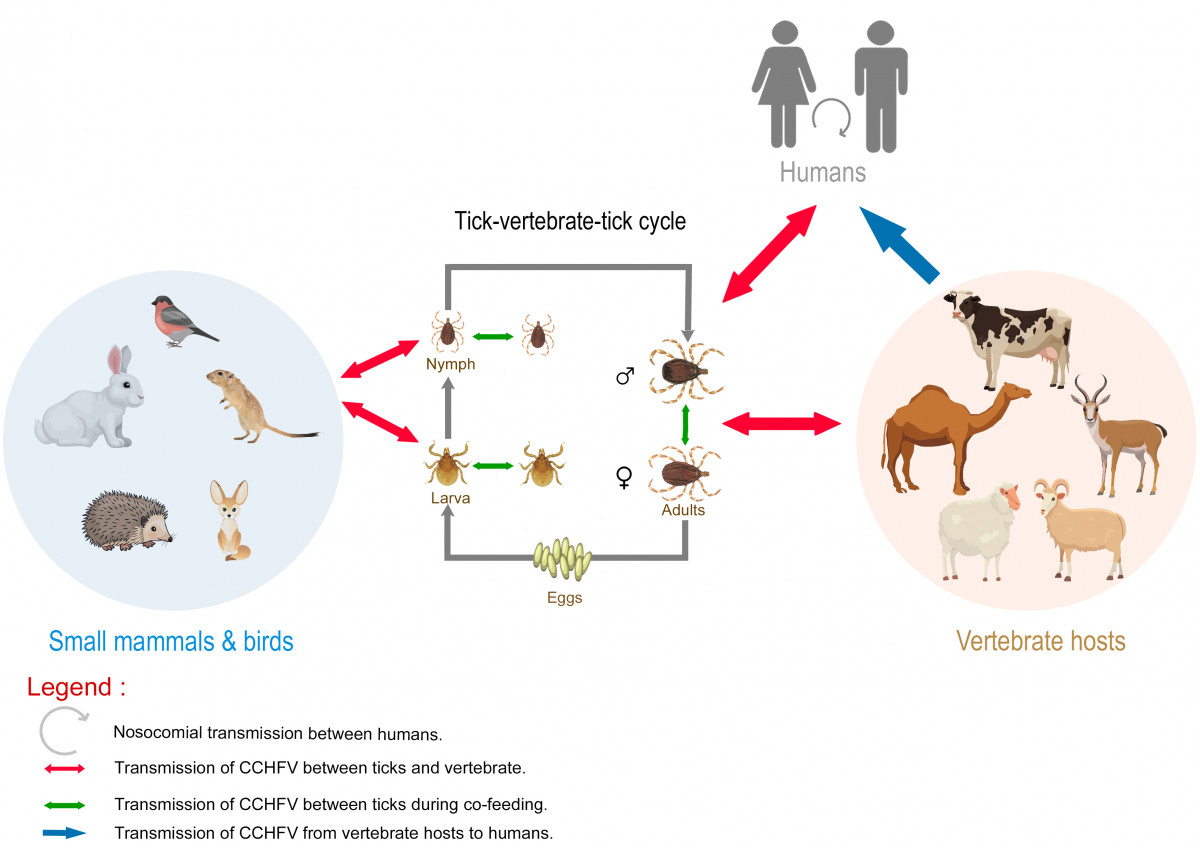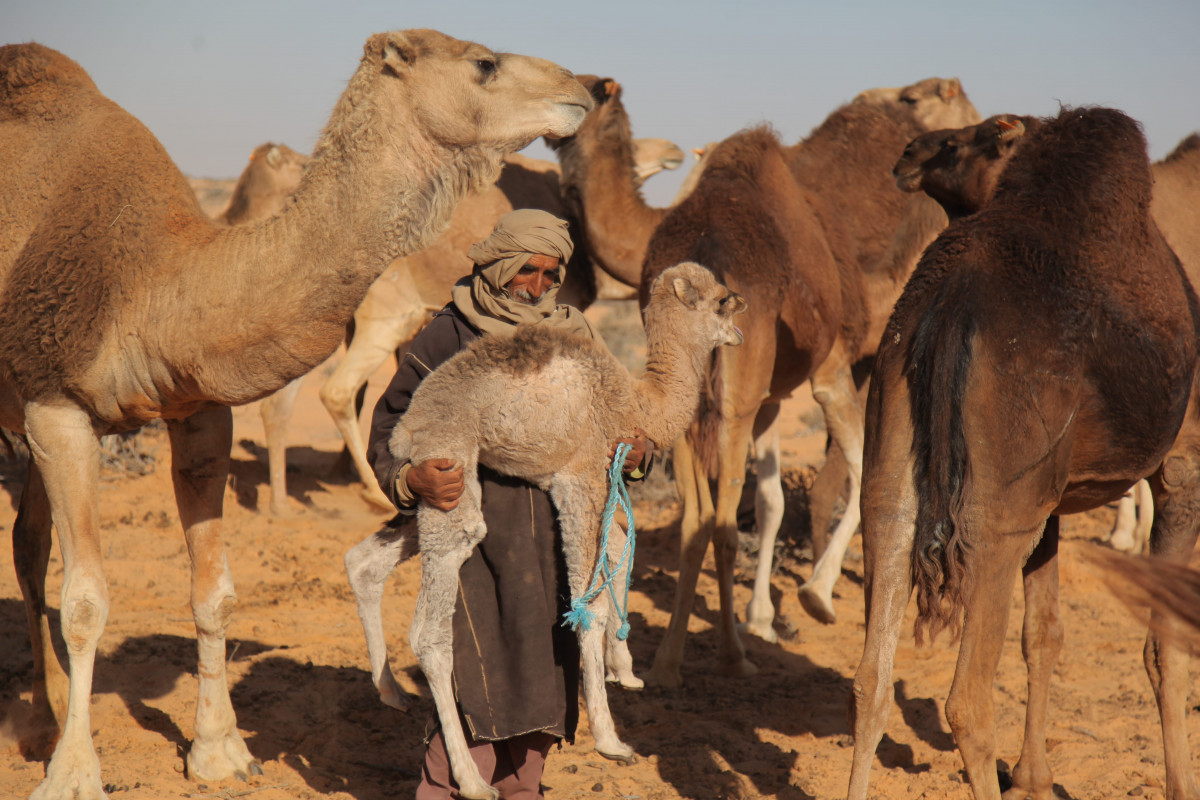
Uncovering the role of Tunisian camels in spreading the Crimean Congo Haemorrhagic Fever virus
The scientific study described here was made possible through the support and collaboration of CGIAR's Research Program on Livestock (CRP Livestock) and the National School of Veterinary Medicine of Sidi Thabet in Tunisia.
To many people, camels conjure up romantic images of deserts and cloaked nomads traveling over desert sands for days on end. What is lesser known is that camels are multipurpose animals raised for their milk, meat and fiber and represent one of the main agricultural activities in the Saharan area of south Tunisia.
The overall camel population of Tunisia exceeds 56,000 heads, of which 96% are located in the south. These hardy animals are reared in the vast rangelands and play a key role in stabilizing pastoral human populations by offering a source of income for many families.
Like all livestock, camels are attractive to ticks, which are the source of many health problems frequently reported by camel owners. Ticks in camels can cause skin damage, anaemia in calves and transmit microbes (viruses, bacteria and parasites), some of which are zoonotic. The risk of infestation and transmission is enhanced by the extreme mobility of these animals, which come into frequent contact with other animals as they travel through Tunisian’ governorates and across borders in large transhumant corridors between Algeria, Tunisia and Libya.
Researchers from the International Center for Agricultural Research in the Dry Areas (ICARDA) and the National School of Veterinary Medicine (ENMV Tunisia) performed an acarological survey on camels in Southern Tunisia and observed that these animals were infested by ticks throughout the year. The collected ticks were from the family of Ixodidae (hard ticks), belonging to the Hyalomma genus consisting of Hyalomma dromedarii, Hyalomma impeltatum and Hyalomma excavatum. These tick species are common in Saharan, arid and semi-arid regions and have shown to have varying levels of competence to transmit the Crimean Congo Hemorrhagic Fever virus (CCHFv).
Crimean-Congo hemorrhagic fever (CCHF) is an emerging life-threating zoonotic viral disease. In humans, the disease can express itself in a wide range of symptoms – varying from asymptomatic to severe haemorrhagic fever that can be lethal. Unlike humans, camels are resistant to the infection and do not show any clinical signs. Investigations in the parasitology lab of the National School of Veterinary Medicine of Sidi Thabet (ENMV) revealed that about 90% of tested camels had specific antibodies against CCHFv, which confirm a high rate of previous contact with the virus.
These results likewise confirm the silent circulation of CCHFv between ticks and camels in Tunisia. They also show the important epidemiological role of camels for the virus, potentially transmitting the infection to exposed men and women. To further understand the epidemiology of the disease in Tunisia, ICARDA and ENMV researchers are now looking at desertic small mammals (mainly rodents) that live in the same environment as camels to examine whether they play a role in the transmission of the virus. Small rodents serve as feeding hosts at the early growth stages of ticks.
 The epidemiological life cycle of Crimean-Congo haemorrhagic fever (Source: Laboratory of Parasitology, National School of Veterinary Medicine of Sidi Thabet ENMV)
The epidemiological life cycle of Crimean-Congo haemorrhagic fever (Source: Laboratory of Parasitology, National School of Veterinary Medicine of Sidi Thabet ENMV)
Currently, CCHF clinical cases have not been reported in the Tunisian human population, though a low rate of seropositive cases were reported in slaughterhouse workers in Tunis. Human cases have, however, been reported in other nearby countries such as Egypt and Mauritania. The high seroprevalence in camels in Tunisia suggest that there could be clinical cases in humans, which so far remain undiagnosed. This finding is motivating the joint ICARDA and ENMV research team to understand the status of the disease in Tunisia and the role of camels in the epidemiological cycle of CCHFv in order to characterize the risks for both humans and animals.
More research is being carried out on this subject to better understand the biology of tick population infesting camels and other animals from different Tunisian regions and their infection with CCHFv.
 A camel herder in Tataouine, South Tunisia. Herders are often in close contact with their animals, raising the risk of transmission of zoonotic diseases. Photo ICARDA/ Zied Idoudi
A camel herder in Tataouine, South Tunisia. Herders are often in close contact with their animals, raising the risk of transmission of zoonotic diseases. Photo ICARDA/ Zied Idoudi
Read more about the study
- Phenology and phylogeny of Hyalomma spp. ticks infesting one-humped camels (Camelus dromedarius) in the Tunisian Saharan bioclimatic zone. Parasite, 2021
- Epidemiological investigation of Crimean-Congo haemorrhagic fever virus infection among the one-humped camels (Camelus dromedarius) in southern Tunisia. Ticks and Tick-Borne Diseases, 2021





